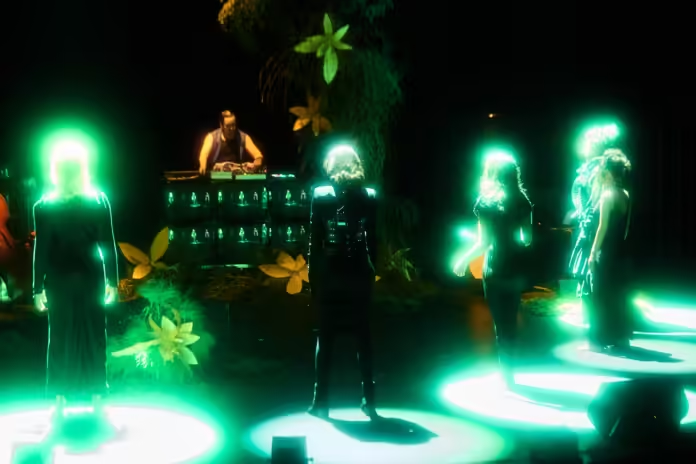Long Beach Opera’s third and final production of 2024 was to be the world premiere of Asunción, billed as “a groundbreaking opera [… that] challenges traditional cisgender and heteronormative telenovela archetypes” and workshopped last October at the LAX Festival.
But less than a month before its slated July 13 opening, LBO announced that Asunción “will not move forward as planned” — the third time in three seasons that productions have not gone forward as planned. No explanation was provided.
But unlike in 2022, when LBO canceled its first two shows in the wake of resignations and allegations of “racial tokenism” and “a culture of misogyny” (charges for which LBO says there is “no evidence”), this time the Los Angeles area’s longest-running opera company managed to come up with a replacement, in the form of Bye Bye Butterfly, performed July 20 and 21 at the Los Angeles Theatre Center. “LBO was determined to devise a show through a truly generative process, giving our diverse and ultra-talented team the freedom to uniquely express themselves and bring a joint vision to life,” says the program notes. “And as always, we aimed to push the boundaries of opera and re-contextualize its relevance for new audiences.”
It’s an open question how old audiences (read: longtime LBO subscribers) may feel about LBO’s first-ever season with only three shows and zero “true” operas. But while the pastiche quality of Bye Bye Butterfly may give some indication of how quickly it was thrown together, there was nothing not to like regarding the mighty talents of everyone onstage.
Named for and inspired by Pauline Oliveros’s eight-minute sound-art piece created from tape manipulations of an excerpt from Puccini’s Madame Butterfly, LBO’s Bye Bye Butterfly opened with a long, disembodied drone (bass, violin, saxophone) as the audience sat in the dark. A sinewy silhouette appeared, gently writhing until finally the musicians processed from the lobby to the stage. Slowly, the drone gave way to Laurel Irene’s jaw-droppingly expressive rendition of the “Queen of the Night” aria from The Magic Flute. Rendered with various electronic effects, including slight distortion on Irene’s intense soprano stylings and manipulations of orchestral accompaniment augmented by the small ensemble onstage, Bye Bye Butterfly was off to a compelling start.
Although what followed was no less impressive technically, as the 75-minute program wore on this template (wordless drone/noise passages easing into arias (from Don Pasquale, The Marriage of Figaro, etc.) — or in one case, a corrido (which Juan Renteria absolutely knocked out of the park) — atop electronic manipulations of various sorts) came to feel a bit played out. Apropos of “less is more,” cutting most of the connective tissue by half, maybe losing an aria (i.e., for time/flow — every performance was fantastic in and of itself) and a bass solo (honestly, do long unaccompanied solos ever really sound all that good, even when the practitioner is as good as Marlon Martinez was here?), and doing away with a long breath circle near the conclusion would’ve made for a relatively tight 50ish minutes.
Yes, LBO’s Bye Bye Butterfly was not especially high-concept (hell, how high-concept can ya get with three weeks’ prep time?). Nonetheless, there was nothing slapdash about the quality of either the simple mise en scène (particularly, Pablo Santiago’s gorgeous lighting) or the not-so-simple performances.
Since James Darrah came on board as artistic director in 2021, Long Beach Opera has staged fewer works per season than at any time in its history. But although the caliber of work has run the gamut, when all the pieces are in place Darrah has proven eminently capable of leading his troops to greatness. Bye Bye Butterfly was a prime example of the level of talent he can martial. Here’s to hoping 2025 features such all-star rosters performing the sorts of full-fledged productions that have marked the high points in LBO’s history.



